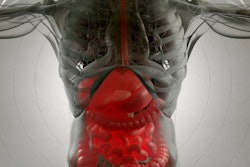Dear AuntMinnie Member,
How useful could virtual/augmented reality technology be for the diagnosis of conditions such as diverticulitis? It appears to be on par with desktop computers for this purpose -- although interpretation time is longer, according to a study we're highlighting in this edition of our CT Insider. Click here to get the details.
Once you've read that article, browse our CT content area for more coverage of the modality, including two reports on pediatric CT -- one that urges prudence when using CT to image the newborn liver and another that claims that caution is in order when using low-dose CT (LDCT) protocols with computer-aided-detection (CAD) systems for diagnosing small lung nodules in children.
Check out stories on tributes to CT pioneer Willi Kalender, MD, who died in October; research that found only modest interobserver agreement on interstitial lung disease diagnosed with high-resolution CT imaging; and a study that reported findings from a CT exam of a 175-year-old stringed instrument.
We're also highlighting photon-counting CT (PCCT) study results that suggest the technique shows promise for generating opportunistic bone density data and that it could serve as an alternative to MRI for assessing fatty liver disease.
Finally, take a look at our coverage of the recent International Society for Computed Tomography (ISCT) meeting, including research that explored how to reduce iodinated contrast media waste in CT operations; how opportunistic CT data can improve patient care; how new professional positions could relieve RT workforce strain in the CT suite; and how AI is impacting the modality.
Be sure to visit our CT content area regularly to stay apprised of the modality's many growing edges, and if you have CT-related topics you'd like us to consider, please contact me.
Kate Madden Yee
Senior Editor
AuntMinnie.com




















